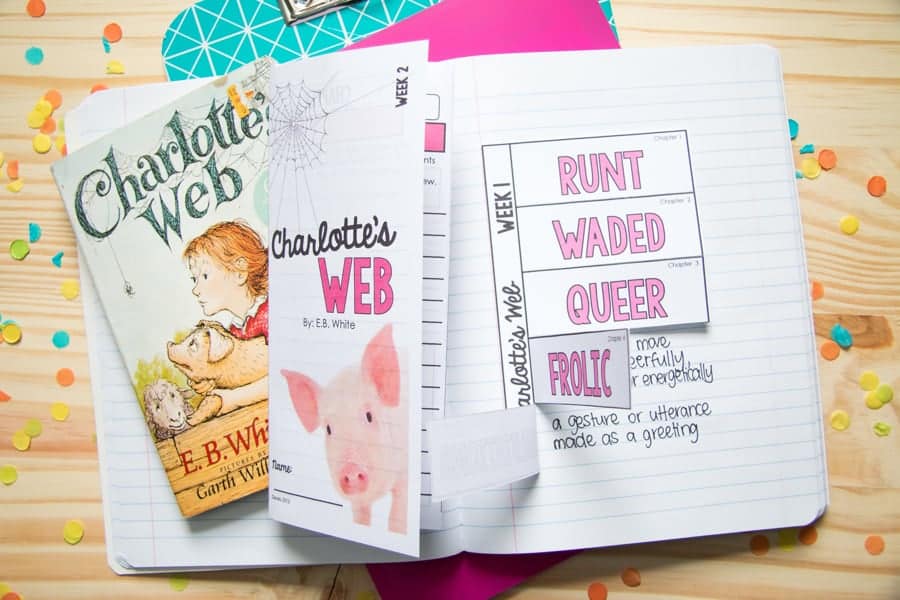What Our Holes Study Looked Like in a Real Homeschool Week
When I first told my tween we were reading Holes for our next book unit, her response was immediate:
“Oh… but I already saw the movie.”
Not exactly the enthusiastic book launch I was hoping for.
But I knew there was more to Holes than the Disney adaptation could ever capture. With layered storytelling, rich vocabulary, and big ideas woven throughout the narrative, it was the perfect next step for building deeper reading habits—and I just needed the right structure to support that.
This post walks you through what our first week of the Holes novel study looked like at home—no busywork, no fluff, just meaningful reading, discussion, and skill-building (in under 30 minutes a day).

A Look at Our 5-Day Reading & Discussion Routine
We followed a simple rhythm each day:
- Read 1–2 chapters together (about 15–20 minutes)
- Complete that day’s Digital Slide
- Discuss our answers over lunch, a walk, or during a snack break
Here’s what our Week 1 looked like:
Day 1: Chapters 1–2 Exploring Irony
We started with a light reading load—just two chapters—to get a feel for the rhythm of the story and the style of the writing. Then, we talked about irony and how the author uses it to shape the setting (a place called Camp Green Lake… with no lake in sight).
My daughter used the digital slides (because typing is easier with dysgraphia) to explain irony in her own words and gave an example from the text. The Word of the Day (shriveled) was a great opportunity to talk about descriptive vocabulary and visualizing setting details.

Day 2: Chapters 3-4 Character Perspective
These chapters dove into Stanley’s first impressions of camp. The comprehension prompt asked her to analyze how Stanley must feel after arriving and seeing what’s ahead. The structure of the question helped her slow down and imagine his perspective, which is something she usually rushes through.
We also introduced the word perseverance, which is used repeatedly in the novel. It sparked a great discussion about what it actually means, and what it looks like in real life.
Day 3: Chapters 5-6 Point of View
This was one of my favorite days because we had a big conversation about the narrator’s role in shaping the story. The prompt encouraged her to think about how the story might feel different if told by Stanley or Mr. Sir. It made her really stop and consider who’s telling the story and why that matters.
Vocabulary word of the day? Scarcity…a concept we tied to both the book and real-world economics!
Day 4: Chapters 7-8 Connections
This is where the novel study really shines. The day’s prompt asked her to make a personal connection to something Stanley experienced. The prompt focused on reflecting on moments of pride and making connections to Stanley’s experience, which was a really fun opportunity to see how my daughter viewed her accomplishments.
The vocabulary word forlorn helped her describe Stanley’s emotions more precisely, and it stuck with her all week.
Day 5: Chapters 9-10 Visualizing
Friday’s reading brought us back to setting. The prompt asked her to use descriptive details from the text to explain where the scene took place. This helped us loop back to Monday’s discussion about irony and contrast that with the gritty reality of life at the camp.
The Word of the Day was radiated. It was used in the text to describe heat, but we also talked about emotional connotations (like someone “radiating joy”), which brought a fun twist to vocabulary learning.
Why This Routine Worked So Well for Us
✅ Predictable, low-prep structure: She always knew what to expect—read, respond, discuss.
✅ No busy-work fatigue: The open-ended prompts encouraged deeper thinking without being overwhelming.
✅ Natural vocabulary growth: With one new word each day, she retained more and dreaded it less.
✅ Just enough writing: The space was structured, but not excessive—perfect for kids with writing anxiety or dyslexia.
Looking Back at Our First Week with Holes
If you’ve been hesitant to revisit Holes because your tween already “knows the story,” don’t let that stop you.
Our first week with the Holes novel study reminded me that meaningful reading isn’t about newness. It’s about depth, discussion, and connection. And this unit gave us all of that.
Want the same 25-day plan laid out for your homeschool?
Grab the full Holes Novel Study right here on TPT.

You’ll get everything you need to guide your tween through the book with confidence—no busywork, no overplanning, just great reading and real growth.








